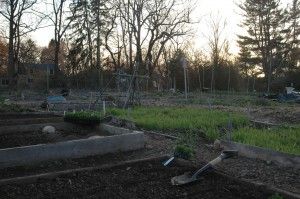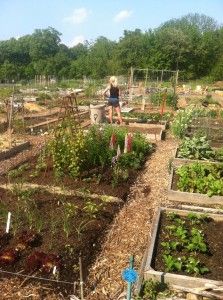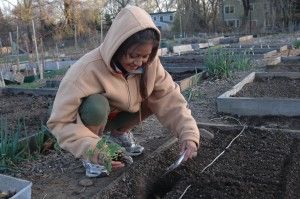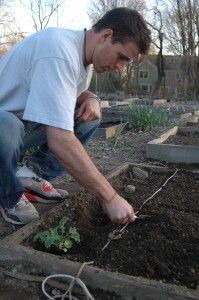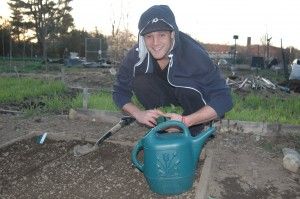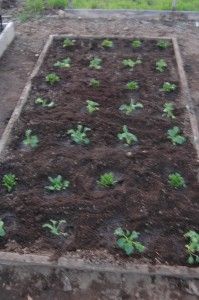First Steps in Growing an Organic Fruit and Vegetable Garden
It’s Friday at Lucid Practice, so that means it’s time for a garden post!
This spring, Kate, Brian, Danielle and I started our own organic fruits and vegetable garden.
We purchased our membership into the the Westport Community Garden Association and we were granted a 20′ x 10′ plot. The first step was to create “raised beds.” We did this by digging holes into the ground and placing rectangular wooden planks (pictured below) into the ground.
Next, we shifted the soil to remove all sizable rocks. The fewer rocks, the better the soil. The better the soil, the better the growth!
We dug 18″ deep and lined the bottom of our beds with newspaper in an attempt to thwart off weeds. Throughout the beds, we placed an enormous amount of compost. Danielle and I had been saving up compost for six months during the cold winter months! We were happy to be able to contribute a 20 gallon garbage can full of compost.
Something felt right about improving the soil’s quality by adding 20 gallons of compost while knowing that it would have otherwise been wasting away in a landfill!
We tested the soil (using this: Rapitest Soil Tester) to find that it was pH neutral to slightly alkalinic.
Then, we were ready to plant! We purchased kale and spinach seedlings (pictured below) from Gilbertie’s in Westport. We’re fortunate to have Gilbertie’s in town as it the country’s largest producer of organic herbs. On top of that, their staff is helpful, friendly, engaging, and creative. Being around thousands of plants every day must infuse positive energy and a strong connection with Nature.
Kate served as the veteran of our gardening crew (her family has gardened for years) and she got a kick out of us “city boys” learning how to garden for the first time. Here she is examining the garden:
There’s a secret that an old+time Italian organic gardener from Westport taught us. At the bottom of each hole, place seaweed and a banana peel to foster better growth. Here’s Danielle putting the first kale plant into the ground!
Here’s me tilling the soil near our first kale plant:
Brian planting the first spinach plant:
And the finished product:
Great job, right? Well, yes and no. Check out this e+mail exchange between Brian and the Italian Organic Gardener.
“My name is Brian Levine…I am doing my first grow ever this season at the westport community garden…I heard great things about you as a person and heard that you are a terrific resource for knowledge and information when it comes to organic gardening. I have checked out your blog, its extremely helpful.
My friends and I were anxious to get something in the ground, so after fixing up the raised beds (weeding, sifting all the rocks out and adding a winters worth of saved compost) we transplanted some kale and spinach that we got from gilberties in Westport (we know its not growing from seed but its just the beginning for us). We put compost at the bottom of each trench. Ellen Greenberg said we have fantastic soil but we still will need to do a soil test to figure out the ph/acidity.
I am going to attach a picture. I dont know if we should add anything to the soil when growing kale/spinach. I saw on your blog that depending on what you are growing you are constantly adding your own touch from experience. Please let me know what you think if you have the time. I wanted to introduce myself and I appreciate any response. Thanks, Brian”
“Hello Brian,
First, have you have added any nutrients to the soil? Compost alone, especially if it’s not fully decomposed won’t have enough sustainability for kale or spinach, which need nitrogen. If you want to start on the right foot, i suggest you take a soil test not only to determine how much NPK there in the soil, but to find out how the micronutrients and pH level is. Plants, especially when growing in cold soil will not be able to extract nutrients if the pH is not adjusted properly.
There is too much space wasted between plants in your raised bed: spinach should be spaced 4-5” and kale about 10. And, try not to incorporate compost on the bottom of the trench, instead work it into the whole bed.
Good luck.”
Gardening, like life, is a learning process….
More posts to come on the costs associated with starting/maintaining the garden, the amount of fruit/veggies yielded, the mistakes we’ve made, the lessons we’ve learned, and the fun we’ve had!
